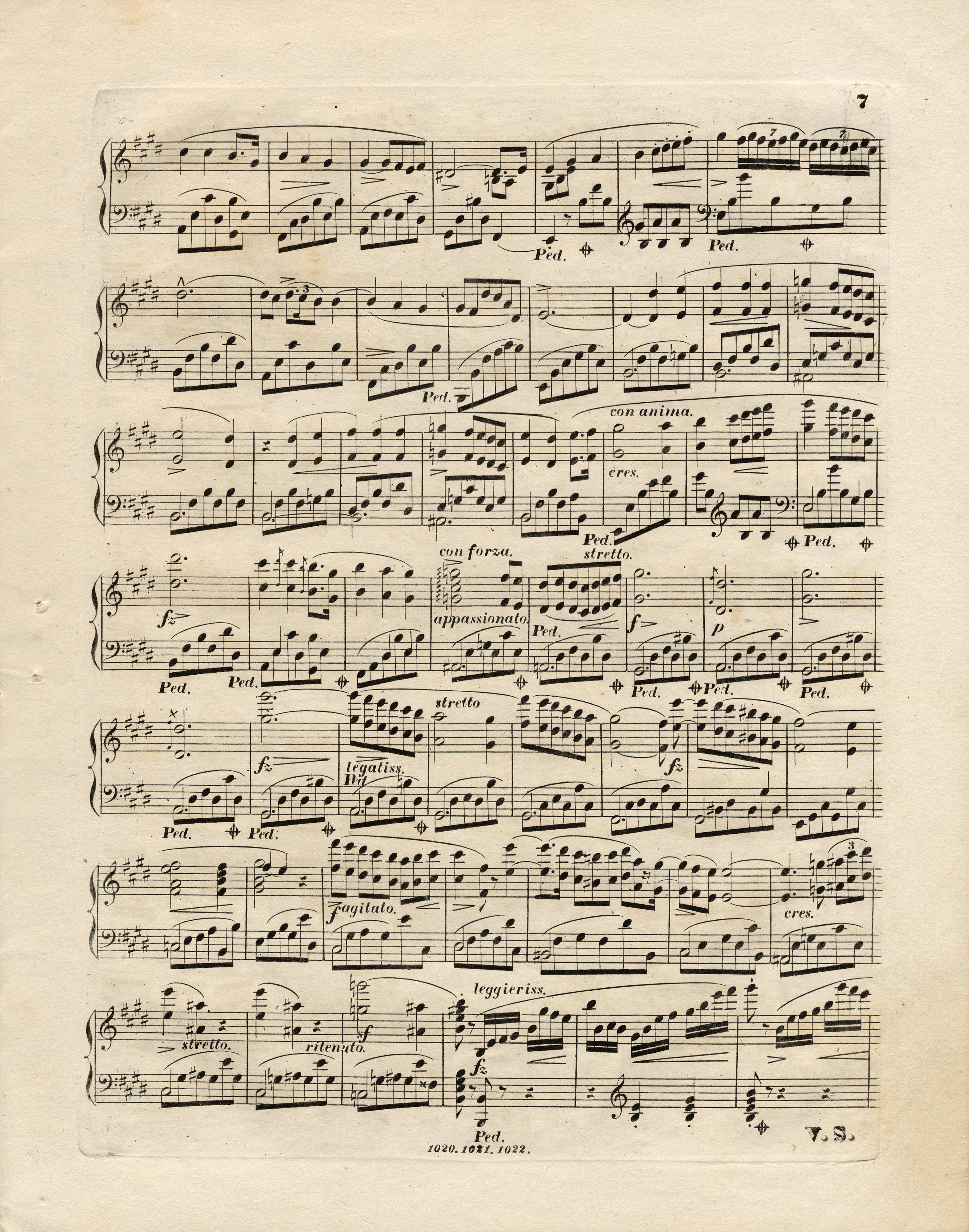



In FE (→GE,EE), there is no digit determining the rhythmic shape of the group of 7 quavers. The alignment of notes with respect to the L.H. adopted in FE (→GE1→GE2) suggests the following grouping:  , which combines well with the stretto indication, written in the 2nd half of the bar. Due to this reason, we preserve this notation in the main text. However, FE are not entirely reliable in this respect, since they feature numerous examples of more or less blatant mistakes in this regard (e.g. in bar 519, the 2nd mov., bar 23, the 3rd mov., bar 475, cf. also the Nocturne in B minor, op. 9, no. 1, bars 73 and 75). Therefore, the layout adopted in EE and GE3, corresponding to a
, which combines well with the stretto indication, written in the 2nd half of the bar. Due to this reason, we preserve this notation in the main text. However, FE are not entirely reliable in this respect, since they feature numerous examples of more or less blatant mistakes in this regard (e.g. in bar 519, the 2nd mov., bar 23, the 3rd mov., bar 475, cf. also the Nocturne in B minor, op. 9, no. 1, bars 73 and 75). Therefore, the layout adopted in EE and GE3, corresponding to a  septuplet, may be considered a fully-fledged variant. Practically, the written down rhythm serves as inspiration only; its performance should be uninhibited, smooth and emotionally suggestive.
septuplet, may be considered a fully-fledged variant. Practically, the written down rhythm serves as inspiration only; its performance should be uninhibited, smooth and emotionally suggestive.
Compare the passage in the sources »
category imprint: Graphic ambiguousness; Differences between sources
issues: EE revisions, GE revisions
notation: Rhythm



